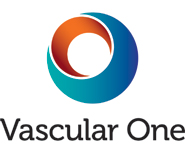Angioplasty is a medical procedure in which a balloon is used to open narrowed or blocked arteries. Although the procedure is minor and done under local anaesthetic, it is a definite surgical operation and proper surgical care is required during and after the procedure.
Description
Arteries can become narrowed or blocked by deposits called plaque. Plaque is made up of fat and cholesterol that builds up on the inside of the artery walls. This condition is called atherosclerosis.
If the blockage is not too severe, an angioplasty procedure can be used to open the artery. Traditional angioplasty involves the use of a balloon catheter -- a small, hollow, flexible tube that has a balloon near the end of it.
Before the balloon angioplasty procedure begins, you will be given some sedation and blood thinning medicines to prevent formation of a blood clot.
You will lay down on a padded X-Ray table. A needle under local anaesthetic usually near the groin, allows access into the artery. You will be awake during the procedure.
Special x-rays are used to look at your arteries. Dye will be injected into your body to highlight blood flow through the arteries. This reveals the blockages in the arteries. The balloon catheter is moved into or near the blockage, and the balloon on the end is blown up (inflated). This opens the blocked vessel and restores proper blood flow to the heart.
In almost all cases, a device called a stent is also placed at the site of narrowing or blockage in order to keep the artery open and prevent renarrowing. Common types of stents are balloon expandable stainless steel stents and nitinol self expanding stents.
Indications
Angioplasty may be performed to treat:
- Pain - Claudication
- Ischaemic rest pain
- Ischaemic ulcers
- Gangrene
- Renal artery stenosis
- Carotid artery stenosis
Risks
The risks for any aneasthesia are:
- Reactions to medications
- Problems breathing
- Allergy to contrasts
The risks for any surgery are:
- Bleeding
- Infection
Additional risks are related to the specific procedure being performed
Expectations after surgery
This procedure greatly improves blood flow through the arteries and should relieve symptoms and prevent future complications.
This procedure treats the condition, but does not cure the cause. Re-narrowing may occur, which may or may not require another procedure. However, the introduction of stents coated with medicines to prevent narrowing (drug-eluting stents) has helped reduce the rates of repeated angioplasty.
You should diet, exercise, stop smoking (if you smoke), and reduce stress to help lower your chances of re-narrowing. Medication, such as a statin drug, will help lower your cholesterol and stabilise the arterial wall.
Aspirin and the anti-platelet medicine clopidogrel (Plavix, Iscover) are usually given after angioplasty and stenting. It is very important to take the medicines exactly as recommended. Failure to do so can result in blood clotting in the stent (stent thrombosis).
If the arteries are not sufficiently widened by angioplasty or the blockages are too severe to be treated by angioplasty, by-pass grafting may be recommended.
Convalescence
Usually, the average hospital stay is less than 2 days. Sometimes, an overnight hospital stay is not required.
In general, persons who have angioplasty are able to walk around within 6 hours after the procedure. Complete recovery takes a week or less. You should keep the area where the catheter was inserted dry for 24 to 48 hours.
You will be reviewed one month after procedure, and an ultrasound will be performed so that no complications have developed.
